A solid spherical ball is released from rest on an incline of inclination angle θ (which can be varied ) but through a fixed vertical height h. The coefficient of static and kinetic friction are both equal to μ. If E represents the total kinetic energy of the ball at the bottom of the incline as a function of the angle of inclination θ. W represents the work done by friction for the whole time of motion as a function of the angle of inclination θ. Choose of correct graph (s)
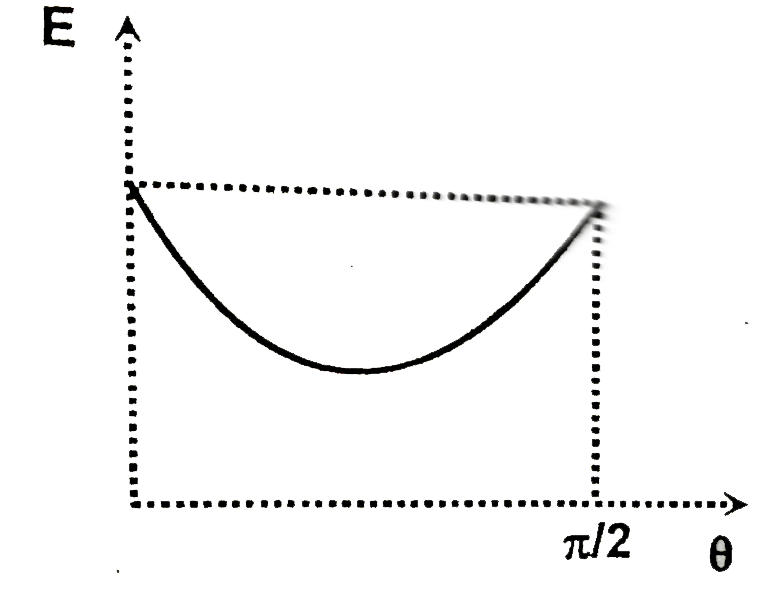

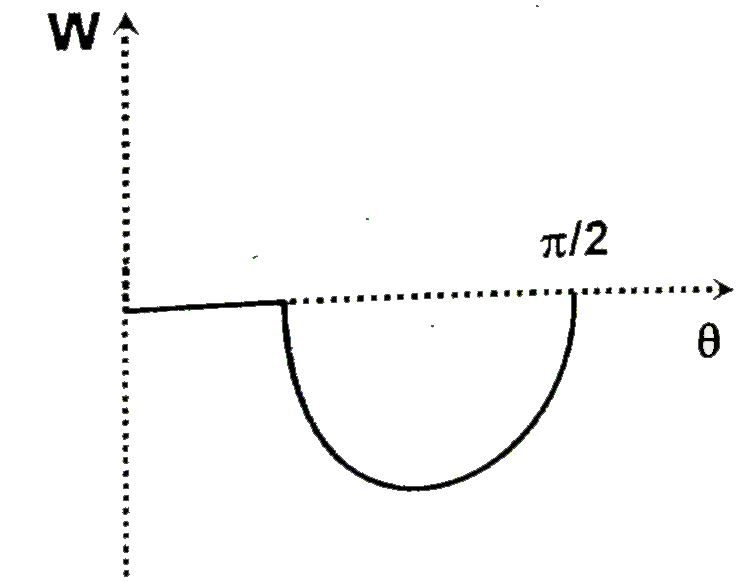
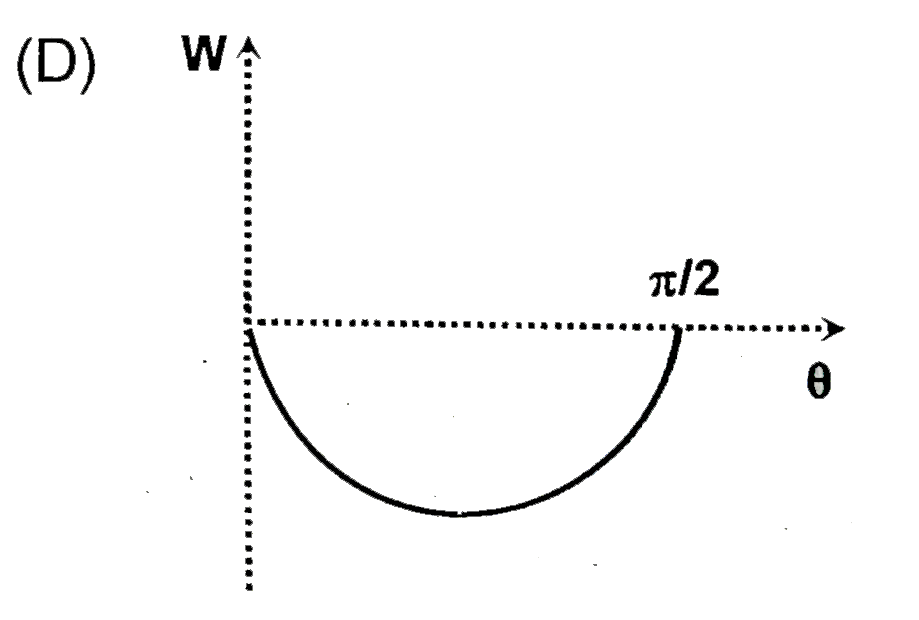
The correct Answer is:B, C
For small angle of inclinations, ball rolls without slipping. So there is no work done by friction. At some critical angle θC, the ball starts slipping. For θ>θC energy would be lost due to work done by kinetic friction. But gain for (θ=π/2), friction would be zero.
Topper's Solved these Questions
- TEST PAPERSBOOK - FIITJEECHAPTER - TEST PAPERSEXERCISE - PHYSICS
747 Videos
- SIMPLE HARMONIC MOTIONBOOK - FIITJEECHAPTER - SIMPLE HARMONIC MOTIONEXERCISE - Assignment Problems (Objective) (Level-II)
20 Videos
- WORK, ENERGY AND POWER BOOK - FIITJEECHAPTER - WORK, ENERGY AND POWER EXERCISE - COMPREHENSIONS ( Comprehension-II)
5 Videos
Similar Questions
A solid ball is realeased from rest down inclines of various inclination angle θ but through a fixed vertical height h. The coefficient of static and kinetic friction are both equal to μ. Which of the following graph best represents the total kinetic energy K of the ball at the bottom of the incline as a function of the angle θ of the incline?
View SolutionA particle is released from the top of an incline of height h. Does the kinetic energy of the particle at the bottom of the incline depend on the angle of incline? Do you ned any more information to anwer this question in Yes or No?
View Solution
Knowledge Check
A solid ball is realeased from rest down inclines of various inclination angle θ but through a fixed vertical height h. The coefficient of static and kinetic friction are both equal to μ. Which of the following graph best represents the total kinetic energy K of the ball at the bottom of the incline as a function of the angle θ of the incline?
A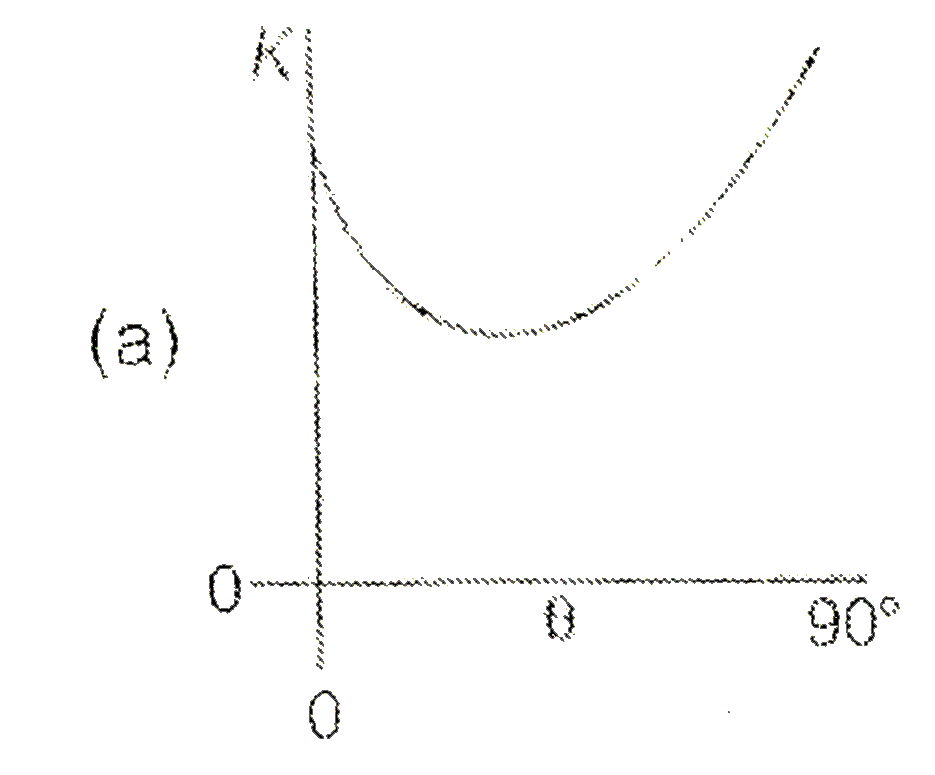 B
B C
C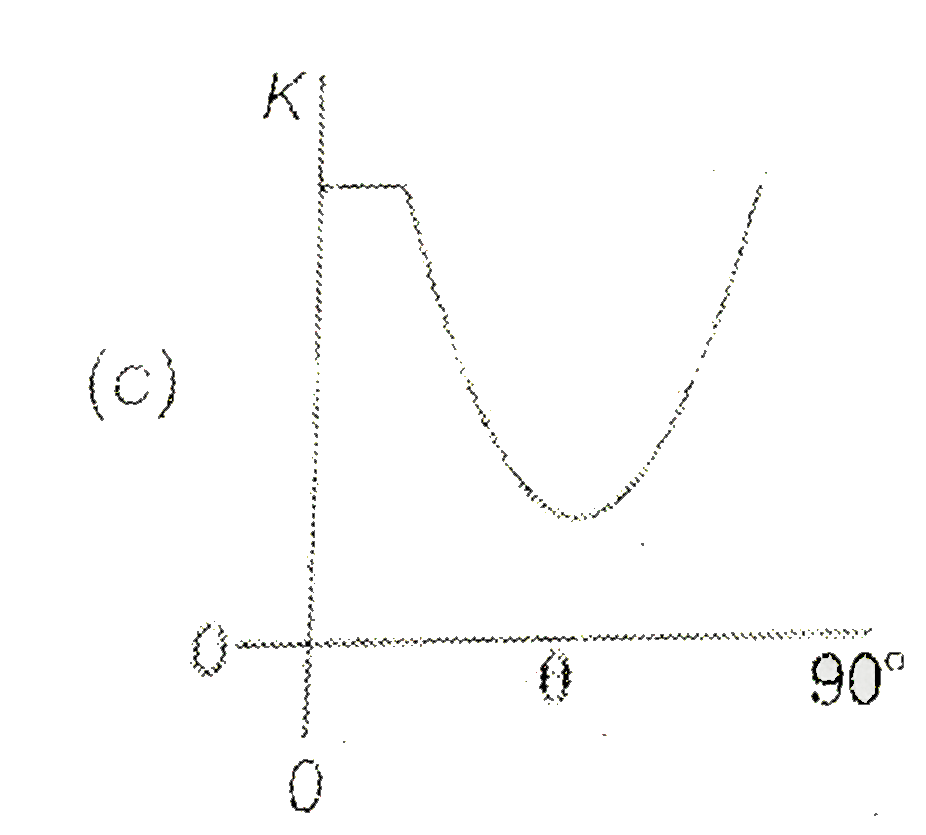 D
D
A block is placed on an inclined plane. The angle of inclination of the plane is such that the block slides down the plane at a constant speed. The coefficient of kinetic friction is
AsinθBcosθCcotθDtanθA hollow spherical ball is given an initial push, up an incline of inclination angle α. The ball rolls purely coefficient of static friction between ball and incline =μ. During its upwards journey.
Afriction acts up along the inclineBμmin=(2tanα)/5Cfriction will be no rotation if h=RDμmin=(2tanα)/7
A particle is released from the top of an incline of height h. Does the kinetic energy of the particle at the bottom of the incline dpend on the angle of incline? Do you ned any more information to anwer this question in Yes or No?
View SolutionA hollow spherical ball is given an initial push, up an incline of inclination angle α. The ball rolls purely coefficient of static friction between ball and incline =μ. During its upwards journey.
View SolutionA block is kept on a inclined plane of inclination θ of length l. The velocity of particle at the bottom of inclined is (the coefficient of friction is μ
View SolutionA solid spherical ball is rolling without slipping down an inclined plane. The fraction of its total kinetic energy associated with rotation is
View SolutionA solid spherical ball is rolling without slipping down an inclined plane. The fraction of its total kinetic energy associated with rotation is
View Solution
